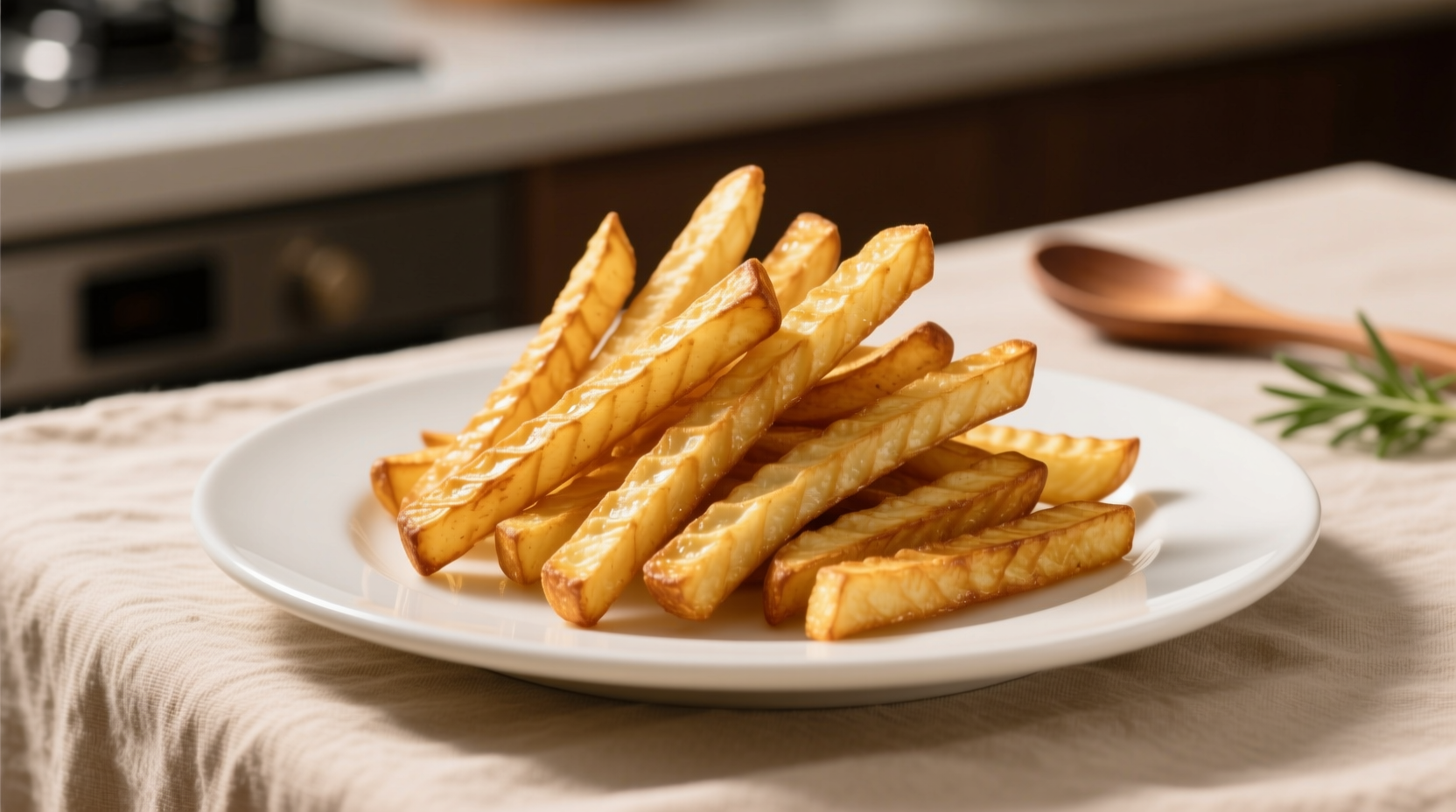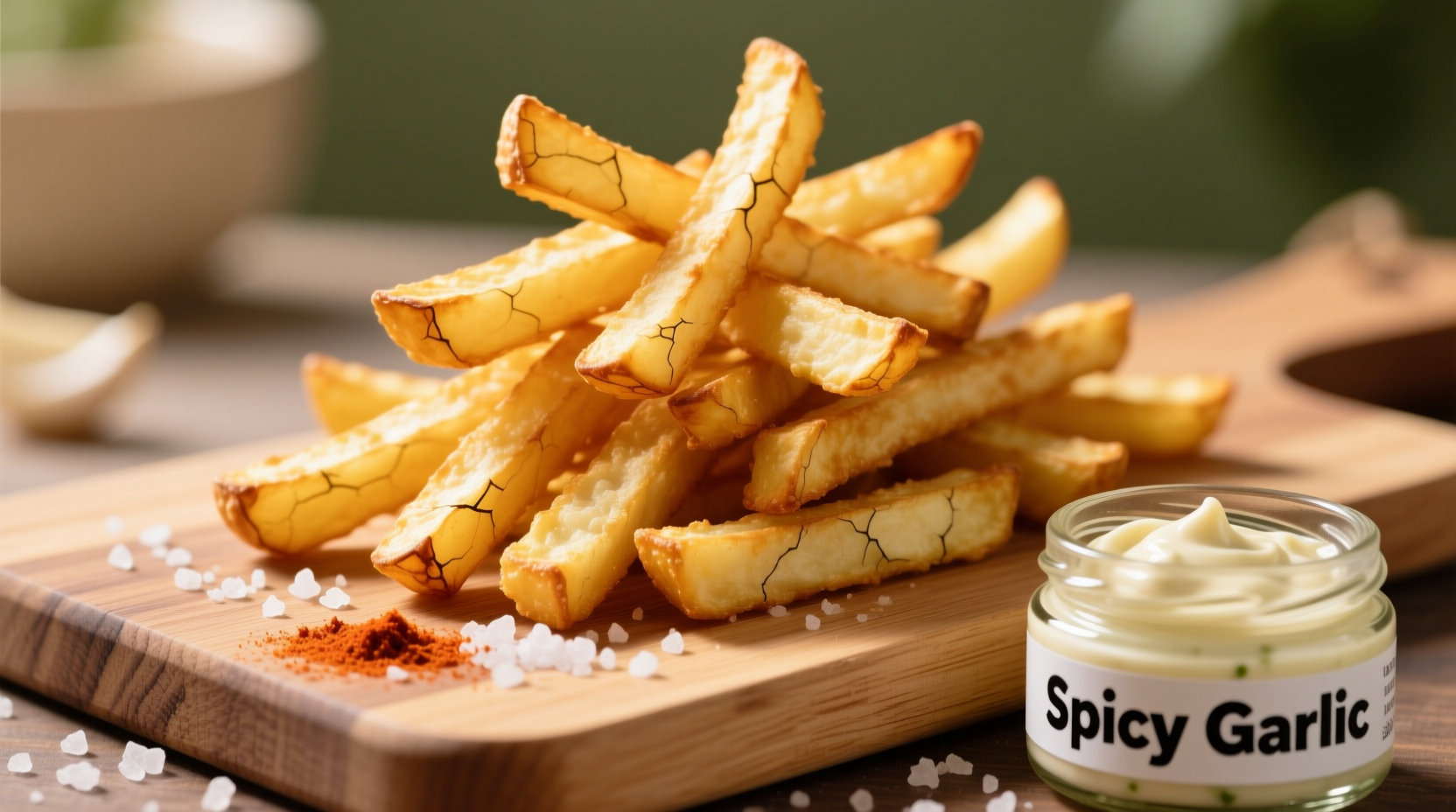The Essential Guide to Perfect Potato Sticks: From Selection to Serving
Nothing satisfies a craving quite like well-executed potato sticks—golden brown, satisfyingly crunchy on the outside, and fluffy within. Yet achieving this balance consistently challenges many home cooks. The difference between mediocre and magnificent potato sticks hinges on understanding potato chemistry, moisture management, and precise heat application. Let's explore the science-backed methods that transform this humble snack into a culinary triumph.
Understanding Potato Stick Fundamentals
Potato sticks, sometimes called french sticks or steak sticks, differ from traditional french fries primarily in their uniform thickness and straight-cut preparation. Unlike crinkle-cut or waffle fries, potato sticks maintain consistent dimensions that promote even cooking. According to the USDA FoodData Central, a standard 3-ounce serving of homemade potato sticks contains approximately 140 calories, 15g carbohydrates, and 2g fiber when prepared without excessive oil absorption.
| Potato Variety | Starch Content | Best Cooking Method | Texture Result |
|---|---|---|---|
| Russet | High (20-22%) | Frying | Crispiest exterior, fluffiest interior |
| Yukon Gold | Medium (16-18%) | Baking/Air Frying | Creamy texture, golden color |
| Red Potatoes | Low (14-16%) | Light Frying | Firmer bite, less fluffy |
Step 1: Selecting and Preparing Your Potatoes
Professional chefs prioritize starch content when selecting potatoes for sticks. The FDA Food Safety Guidelines recommend storing potatoes in a cool, dark place between 45-50°F (7-10°C) to prevent sprouting and maintain optimal texture. Never refrigerate potatoes, as cold temperatures convert starches to sugars, causing excessive browning during cooking.
Before cutting, thoroughly wash potatoes to remove dirt while preserving their natural protective coating. For consistent results, use a mandoline slicer or sharp chef's knife to achieve uniform 1/4-inch thickness. Inconsistent sizing leads to uneven cooking—thinner pieces burn while thicker ones remain undercooked.
Step 2: The Critical Blanching Process
Professional kitchens universally employ a two-stage cooking method for perfect potato sticks. First, blanch cut potatoes in 300°F (149°C) oil for 3-4 minutes until slightly softened but not browned. This initial cooking gelatinizes surface starches, creating the foundation for maximum crispness during the final fry.
After blanching, drain potatoes thoroughly and allow them to cool completely—ideally for 15-20 minutes. This cooling period allows surface moisture to evaporate, which is critical for achieving crispness. Skipping this step traps moisture that causes oil to splatter and prevents proper crisping.
Step 3: Achieving Perfect Crispness
For the final cooking stage, heat oil to precisely 375°F (190°C). The National Center for Home Food Preservation confirms this temperature optimally balances crisp exterior formation with complete interior cooking. Use a thermometer to monitor temperature—fluctuations of even 10°F significantly impact results.
Fry in small batches to maintain oil temperature. Overcrowding lowers the oil temperature, causing potatoes to absorb excess oil and become greasy. Cook for 2-3 minutes until golden brown, then immediately transfer to a wire rack lined with paper towels. Avoid draining directly on paper towels, which traps steam and softens the crust.
Step 4: Flavor Enhancement Techniques
Season potato sticks immediately after frying while still slightly oily—this allows seasonings to adhere properly. For classic flavor, combine sea salt with a pinch of garlic powder. For gourmet variations:
- Truffle Parmesan: Freshly grated Parmesan, truffle salt, and parsley
- Smoky Paprika: Sweet paprika, smoked salt, and a touch of cayenne
- Lemon Herb: Dried rosemary, lemon zest, and black pepper
Professional chefs recommend applying seasonings in stages—a light dusting before frying creates subtle flavor layers, while the main seasoning occurs post-frying for maximum impact.
Health-Conscious Preparation Methods
For those seeking lower-fat alternatives, air frying produces surprisingly good results. Toss blanched potato sticks with one teaspoon of oil per pound of potatoes, then air fry at 400°F (204°C) for 15-18 minutes, shaking the basket every 5 minutes. While not identical to deep-fried versions, this method reduces fat content by approximately 70% according to research published in the Journal of Food Science.
Baking requires even more precision—spread potatoes in a single layer on parchment-lined baking sheets with adequate spacing. Bake at 425°F (218°C) for 25-30 minutes, flipping halfway through. The key to baking success is ensuring potatoes don't steam—crowding the pan creates moisture that prevents proper crisping.
Common Mistakes to Avoid
Even experienced cooks make these critical errors when preparing potato sticks:
- Skipping the soaking step: Soaking cut potatoes in cold water for 30 minutes removes excess surface starch, preventing stickiness and promoting crispness
- Using room temperature oil: Always start with properly heated oil—adding potatoes to cold or lukewarm oil guarantees greasy results
- Seasoning too early: Salting before frying draws out moisture, preventing proper crisping
- Insufficient drying: Pat potatoes thoroughly dry after soaking—water causes dangerous oil splatters
Serving and Storage Tips
Potato sticks are best served immediately after cooking when at peak crispness. If you must hold them, keep in a 200°F (93°C) oven on a wire rack—never covered, which traps steam. For storage, cool completely before placing in an airtight container at room temperature for up to 2 days. Re-crisp in a 350°F (177°C) oven for 5-7 minutes.

Perfect Pairings for Potato Sticks
Elevate your potato sticks with these professional pairing suggestions:
- Classic Dipping Sauces: Garlic aioli, smoky chipotle mayo, truffle ketchup
- Protein Companions: Grilled chicken, fish tacos, steak sandwiches
- Salad Pairings: Arugula salad with lemon vinaigrette cuts through richness
- Beverage Matches: Crisp lager beer, sparkling water with lime, light-bodied red wine











 浙公网安备
33010002000092号
浙公网安备
33010002000092号 浙B2-20120091-4
浙B2-20120091-4